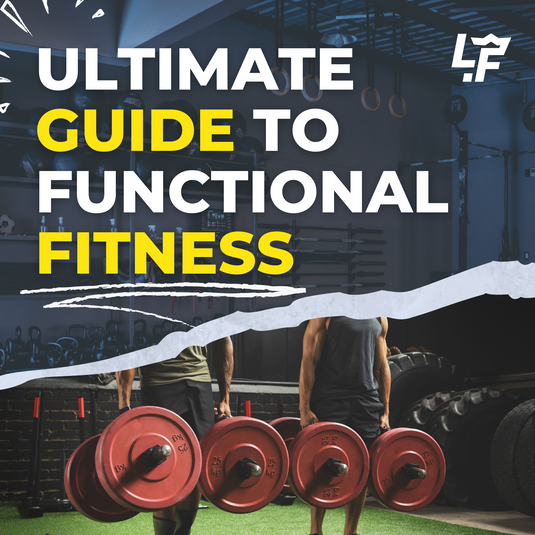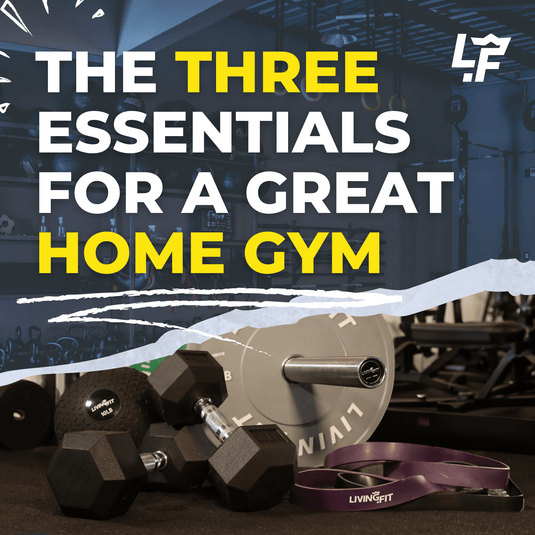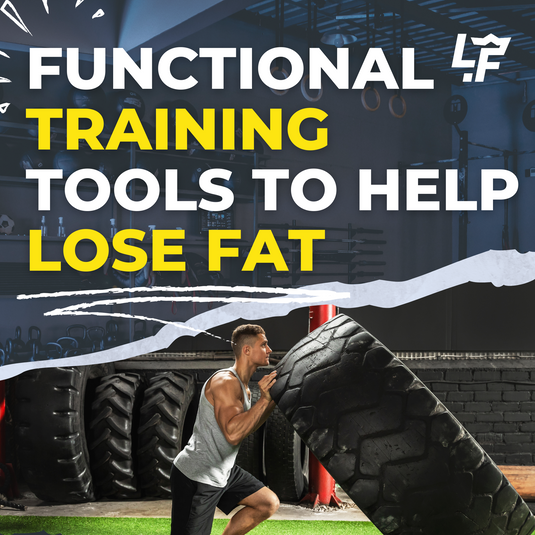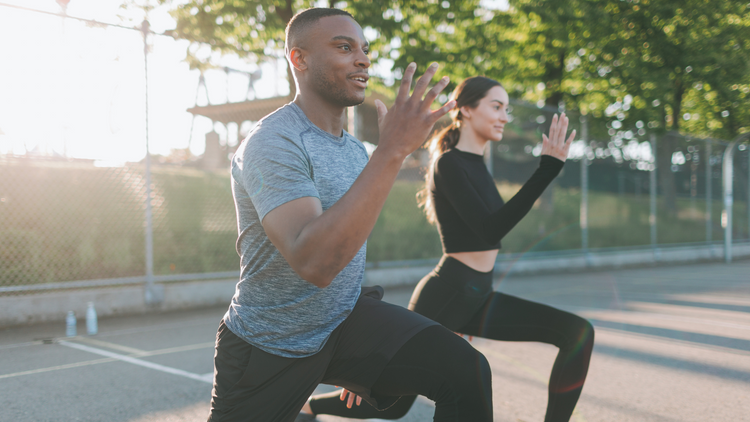Best Resistance Band Workouts for Building Muscle

In 1991, I was in a basketball game that would determine who went to the state tournament. It was also the game that I had to be carried off the court because of a knee injury. The seriousness of the injury became very apparent at the doctor’s office when he moved the bottom part of my leg away from the upper part. I had busted three ligaments and needed surgery. It was an ordeal to say the least. What happened next was surgery with three days in the hospital, six months of intensive physical therapy, being in a wheelchair, relying on my classmates to wheel me around, crutches and a brace from my upper thigh to my ankle. I was determined to return to the court my senior year, so I bucked up and did the work. It paid off, I played my senior year, won all conference and went to the state tournament.
“What does this have to do with resistance bands?” Well, the doctor said I would probably have to have my knee redone in about twenty years and that has been almost thirty-two years ago. So, I am scheduled for total knee replacement surgery in January. Resistance bands will become critical not only for my recovery and rehab, but also for building muscle prior to the surgery.
Benefits of Resistance Bands
- Builds muscle and burns fat.
- Low impact and easy on the joints. There is a decreased risk in overloading the joints by increasing muscular activation surrounding the joints.
- Portable and compact.
- Light weight.
- Inexpensive.
- Versatile. Anybody can use them from experienced athletes to beginners. All muscle groups can be trained at different angles when the anchor point is changed.
- Improves mobility.
- Corrects improper form using reactive neuromuscular training (RNT). This is using outside resistance like bands and stability balls to neurologically turn on an automated response to improve stability and motor skills control. (Kovar 2014)
- Break through plateaus by adding bands to weights.
Types of Resistance Bands
The market for resistance bands is flooded with various improvements on the original design. This can be overwhelming for a consumer determining which type to use so here are some of the various more commonly found types of bands:
- Therapy bands-no handles; used in rehabilitation and stretching exercises.
- Resistance Bands with Handles at each end; used in upper and lower body exercises. These are good for chest presses, bicep curls, and other press and pull exercises.
- Loop bands - no handles; used in upper, lower body exercises and stretching. These are the most versatile. They can be used in bodyweight exercises like pull-ups, push-ups, and squats. They can also be used to add resistance to free weights like the bench press or barbell squat.
Different Types of Resistance
Most brands have a certain color to go along with a certain resistance and they are not universal. For example,Living Fit has six different resistance bands. Here is the breakdown in color and resistance level.
- Red: 5-35lbs.
- Black: 30-60lbs.
- Purple: 40-80lbs.
- Green: 50-60lbs.
- Blue: 60-175lbs.
- Orange: 70-200lbs.
Living.Fit details and itemizes their bands in such a way that is easy to determine what band would be the most helpful for your health and wellness goals.
The thicker the band, the more resistance I have when I stretch them out. The 4 pack (red, black, purple, green) offers a variety of options for me.
Programming
Programming can come in either the form of sets/reps or interval training. Its important to remember that different bands come at different tensions, with some much more intense than others. Lighter, less intense bands require more volume, more sets and more reps or more time under tension. This also translates to longer intervals at more intense pacing. Heavier bands should be done with less volume and more focus on full ROM or used for explosive/power work.
Considerations
- I have learned to mark where my feet are positioned and where my anchor point is during exercises. This helps me track my progress. Different foot positions and anchor points give different resistance levels.
- Living Fit has recommended a grip tool or a towel to help get a better grip on the bands. I found this to be very helpful.
- I started with the lighter band first, so I could focus on form before moving to heavier bands.
- I make sure my anchor point is secure. This is very important, because I do not want to experience the pain of being smacked with one of these bands. They are sturdy.
- If the bands start to show wear and tear, then it is time for new ones. This not only will keep me progressing through my training, but it will also reduce the risk of injury.
- I always do a warm-up of 5 to 10 minutes and a cool-down of stretches.
Exercises for UPPER BODY
Horizontal Pull Aparts
Muscles worked: trapezius, rhomboids, rotator cuffs and rear deltoids.
Bow and Arrow
Muscles worked: upper back and shoulders.
Kneeling Triceps Extension
Muscles worked: triceps
Push-up
Muscles worked: Pectoralis (major, minor), deltoids, triceps, serratus anterior, spinal erectors, glutes, legs, biceps, latissimus dorsi, triceps, trapezious, rhomboids. Push- ups are an all over exercise and when adding a resistance band, they are even more beneficial.
Standing Curls
Muscles worked: biceps
Front Shoulder Raise
Muscles worked: anterior deltoids, lateral deltoid, biceps, trapezius, and pectoralis major.
LOWER BODY
Seated Calf Raises
The seated version of this exercise works the soleus muscle.
Standing Calf Raises
The standing version works the gastrocnemius muscle.
Bent Knee Lateral Steps
Muscles worked: gluteus medius, gluteus minimus, tensor fasciae latae
Overhead Squat
Muscles worked: glutes, quadriceps, adductors, back and core.
Lateral Leg Lifts
Muscles worked: hip flexors and glutes
Forward Lunge
Muscles worked: glutes, quadriceps, hip adductors.
Donkey Kicks
Muscles worked: glutes. This exercise was a bit tricky for me. I found it awkward making sure the band was secure around my foot and holding the anchor points with my hands. If the band slips off my foot, it smacks hard. I will practice this a bit more, because it is a beneficial exercise when done correctly.
Exercises for CORE
Kneeling Palloff Press
Muscles worked: obliques, transverse abdominals, scapular stabilizers, rectus abdominis.
Banded Crunch
Muscles worked: abs
Alternating Plank Rotation
Muscles worked: abs, obliques, lower back, arms & shoulders.
COMPOUND EXERCISES: WORKING MORE THAN ONE MUSCLE GROUP
Deadlift to Bent Over Row
Muscles worked: back (upper), glutes, hamstrings, lats.
Squat to Overhead Press
Muscles worked: hamstrings, quadriceps and shoulders.
Resistance bands can be a great tool to incorporate more core musculature and stability across the body than other modalities. As the band elongates, the tension increases and requirement of the body to stabilize it increases. This also means that tension is being created at the full range of motion.
I have combined the exercises listed above into my regular training sessions. Example would be doing a regular barbell bench press superset with a resistance band push-up. This is a great superset to increase chest strength and hit more musculature of the chest and shoulders.
The Band Shred: 4 Weeks Fat Loss Program by Living Fit has been is a great introduction to adding resistance band training. This program is divided into push, pull and lower exercises and each exercise has corresponding videos and detailed notes, making it easy to follow. I found it easy to follow. All coaches like myself should make themselves more knowledgeable about resistance band training so they can add it to their own programs and the training of their clients.
Helpful Resources:
Keep Challenging Yourself and Reach Your Goals!!
Author
Kathy Bateman
B.S. Health Education
ACE Personal Trainer, Owner of Kat’s Ironclad Fitness
Instagram @katsironcladfitness









